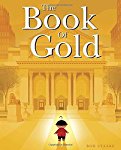For me, the holiday season is a time to give thanks for all the wonderful things that I have in my life. One of these things is my home, my planet, which is such a beautiful, remarkable, and precious place. I have been lucky enough to see some incredible wild places in my life. I have seen the Himalayas, the Great Rift Valley, the Alps, and the Grand Canyon. I have seen a desert in Jordan, a rain forest in India, and a pristine coral reef in the Indian Ocean. What a diverse and rich planet we live on. In honor of our home, today's poetry book celebrates the Earth, the blue planet.
 B is for Blue Planet: An Earth Science Alphabet
B is for Blue Planet: An Earth Science Alphabet
 B is for Blue Planet: An Earth Science Alphabet
B is for Blue Planet: An Earth Science Alphabet
Ruth Strother
Illustrated by Bob Marstall
Poetry and Nonfiction Picture Book
For ages 6 to 10
Sleeping Bear Press, 2011, 978-1-58536-454-1
We live on a remarkable planet, a place where there are
oceans and mountains, where precious gems can be found underground, where
earthquakes shake the earth, and where glaciers creep down valleys. There are
wonders everywhere we look, if we look hard enough. It is a place that is
changing all the time, sometimes in small ways that we don’t even notice, and
sometimes in terrifying ways that turn our lives upside down.
In this
wonderful alphabet book we get to explore some of the features of our planet.
For each letter of the alphabet we explore a topic in verse and in prose, and
these sections of text are presented alongside a wonderful piece of art.
For the letter
C, for example, we visit a coral reef, a place where “Color, shape and size
astounds.” We look at an illustration that captures the diversity of life, and
the rich colors and textures, found on a coral reef. A poem tells us a little
about these marvelous ecosystems; a sidebar full of text gives us a lot more
information about these fragile, and precious places that “provide a rich
habitat for around 25 percent of all ocean life that we know of.”
For the letter H
we find out about hurricanes, those powerful storms that build over warm ocean
water and then, sometimes, come “straight for land – oh what a scare!” The
informational text that accompanies the poem tells us how big hurricanes are,
how they form, and what happens when hurricanes make landfall.
Other topics
that are explored in this book include “A is for Amber,” “D is for Deserts,” “O
is for Oil,” and “T is for Tides.”
This is the kind
of book that a child can grow with. Young readers will enjoy looking at the
pictures and having the poems read to them. An older reader will get a lot out
of the informational text that builds on what the poem tells us.
Alphabet books’
sole purpose used to be to help children learn their ABC’s. Now such titles
help children learn about so many topics that are relevant to their lives. By
combining artwork, nonfiction information, and poetry, the creators of this
book give children a singular reading experience.








